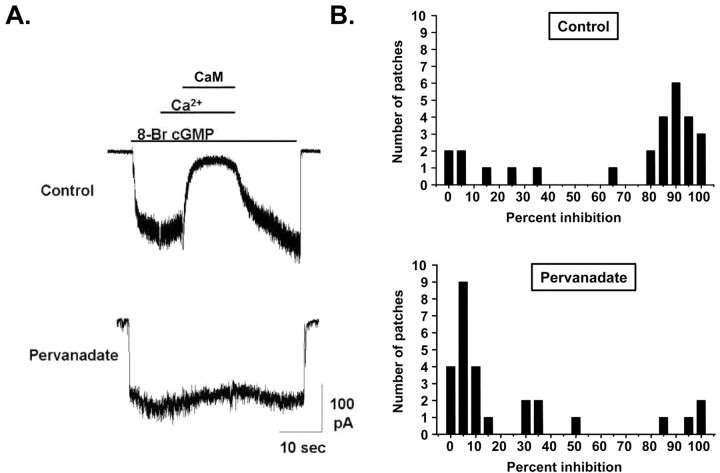Figure 5.
Conditions that promote phosphorylation of native rod CNG channels prevent Ca2+/CaM inhibition. A, CNG currents from inside-out patches excised from ROS in response to 2 μm 8-Br-cGMP. In an ROS patch excised from a rod treated with control saline (top), Ca2+/CaM (50 μm Ca2+ plus 250 nm CaM) inhibits CNG current by ∼90% (top). In an ROS patch excised from a rod treated with 100 μm pervanadate for 1 hr, Ca2+/CaM had little effect (bottom). B, Population histograms of Ca2+/CaM inhibition of patches excised from ROS. Most patches from ROS exposed to control saline had CNG channels that were greatly inhibited by Ca2+/CaM (top), whereas the majority of patches from pervanadate-treated ROS had channels that were only slightly inhibited (bottom).

